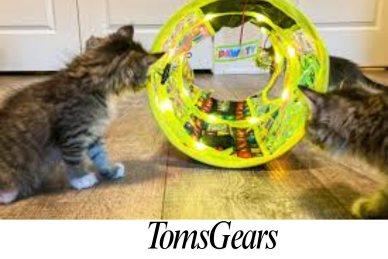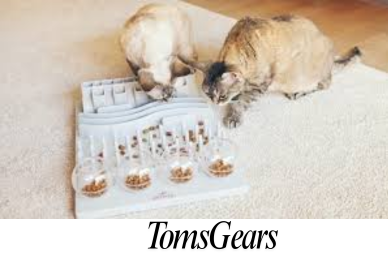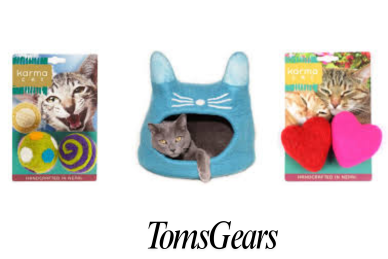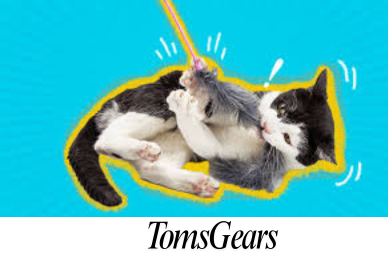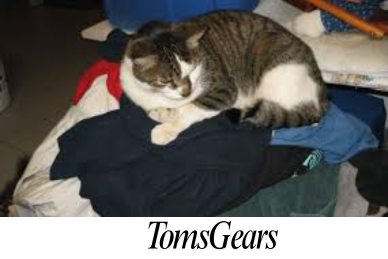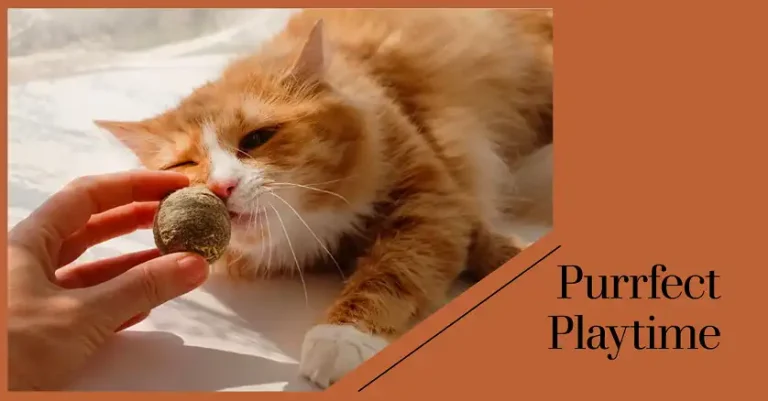Simple Homemade Toy Ideas You Can Use to Entertain Your Cat
Cats are fascinating creatures, full of energy and curiosity. As pet owners, it’s our responsibility to keep them mentally and physically stimulated. While there are countless cat toys available in stores, homemade toys can be just as entertaining, if not more so. They’re cost-effective, customizable, and often made from materials you already have at home. Let’s explore the world of DIY cat toys and how they can keep your feline friend happy and engaged.
Materials for DIY Cat Toys
When making homemade cat toys, safety should be your top priority. Here are some cat-friendly materials you can use:
- Cardboard
- Paper
- Fabric scraps
- Feathers
- Empty toilet paper rolls
- Ping pong balls
- Catnip
Avoid materials that can be easily swallowed or cause harm, such as small plastic pieces, strings longer than 6 inches, or anything with sharp edges.
Simple Homemade Cat Toys
- Crinkly Paper Ball
One of the easiest toys to make is a crinkly paper ball. Simply take a piece of paper, crumple it up, and you have an instant cat toy. The crinkling sound is irresistible to many cats, mimicking the sound of prey rustling in leaves or grass.
- Cardboard Box Fort
Cats love boxes, and a cardboard box fort takes this love to the next level. Use multiple boxes of different sizes to create a multi-level fort. Cut holes between boxes for your cat to explore. You can even add some catnip to make it more enticing.

- Toilet Paper Roll Puzzle
This toy engages your cat’s problem-solving skills. Take an empty toilet paper roll and cut small holes in it. Place treats inside and fold the ends closed. Your cat will have to figure out how to get the treats, providing mental stimulation.
Interactive Homemade Toys
- DIY Wand Toy
Materials needed:
- A stick or dowel rod (about 2 feet long)
- String or fishing line (about 3 feet)
- Feathers, fabric scraps, or small toys
Tie one end of the string to the stick and the other end to the feathers or fabric. Wave it around for your cat to chase. Remember to always supervise play with string toys to prevent accidental ingestion.
- Cat Puzzle Feeder
Create a puzzle feeder by cutting holes in a cardboard box and placing treats inside. The holes should be just big enough for your cat’s paw. This toy stimulates your cat’s mind and slows down eating, which can be beneficial for overweight cats.
Repurposed Household Items as Cat Toys
- Ping Pong Balls in a Bathtub
This simple toy provides endless entertainment. The smooth surface of the bathtub allows the balls to roll and bounce unpredictably, triggering your cat’s hunting instincts.
- Paper Bag Hide-and-Seek
Never underestimate the appeal of a paper bag to a cat. The crinkly texture and enclosed space make it a perfect hiding spot and play area. Just be sure to remove any handles to prevent accidents.
Catnip-Enhanced Toys
Catnip can make any toy more appealing to cats. About 50-70% of cats respond to catnip, according to a study in BMC Veterinary Research. Here’s a simple catnip toy you can make:
- Sock Toy with Catnip
- Take an old sock and fill it with a mixture of catnip and cotton stuffing.
- Tie off the end securely.
- (Optional) Sew small bells or rattles inside for added interest.
Other Homemade Toy Tips
To keep your cat interested, rotate toys regularly. Create a toy rotation schedule, bringing out different toys every few days. This keeps the toys novel and exciting for your cat.
Always prioritize your cat’s safety when creating homemade toys. Avoid small parts that can be swallowed. Remember to regularly inspect toys for wear and tear and supervise play, especially with string-based toys. Finally, ensure all materials used are non-toxic
Every cat is unique, and what works for one might not work for another. Observe your cat’s play style. Do they prefer chasing, pouncing, or batting at objects? Do they like crinkly sounds or quiet toys? Use this information to create toys that your cat will love.
Wrapping Up
Creating homemade toys for your cat is a fun and rewarding experience. It allows you to bond with your pet while providing them with mental and physical stimulation. Remember, the most important toy for your cat is you – interactive play time is crucial for your cat’s well-being.
Key Takeaways:
- Homemade toys can be just as effective as store-bought ones
- Understanding your cat’s play behavior helps in creating suitable toys
- Always prioritize safety when making DIY cat toys
- Rotate toys to maintain your cat’s interest
- Observe your cat’s preferences and tailor toys accordingly
By putting thought and creativity into your cat’s play routine, you’ll have a happier, healthier, and more engaged feline companion.

